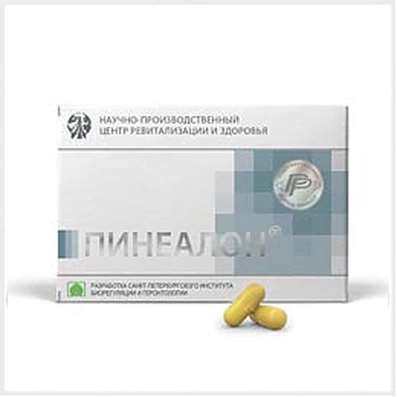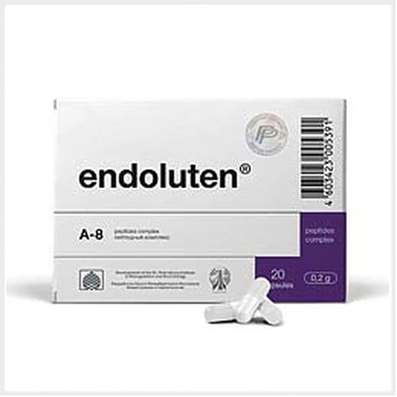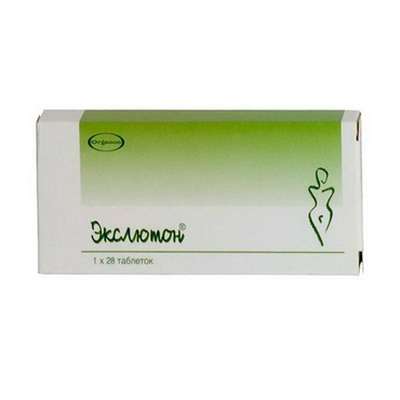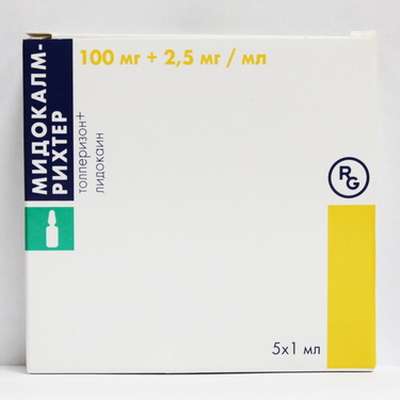Instruction for use: Risdonal
I want this, give me price
Dosage form: tablets
Active substance: Risperidone*
ATX
N05AX08 Risperidone
Pharmacological group:
Neuroleptics
Composition and release form
Tablets, coated with a coating.
risperidone 1 mg; 2 mg; 3 mg
auxiliary substances: lactose monohydrate; ICC; silicon dioxide colloidal anhydrous; sodium croscarmellose; magnesium stearate, titanium dioxide; hydroxypropyl cellulose; color yellow-orange E110 (Table 2 mg); dye quinoline yellow E104 (Table 3 mg)
in a blister of 10 pcs .; in a pack of cardboard 2 blisters.
Description of dosage form
Tablets 1 mg: white, round, biconvex tablets, coated.
Tablets 2 mg: yellowish-orange, round, biconvex tablets, coated, with a risk on one side.
Tablets 3 mg: yellow, round, biconvex tablets, coated, with risk on one side.
Characteristic
Selective monoaminergic antagonist with pronounced affinity for serotonergic 5-HT2- and dopaminergic D2-receptors.
Pharmachologic effect
Pharmacological action - antipsychotic, antiemetic, sedative, hypothermic.
Pharmacodynamics
It also binds to α1-adrenergic receptors and at a slightly lower affinity with H1-histaminergic and α2-adrenergic receptors. Has no tropism for cholinergic receptors. The antipsychotic effect is due to the blockade of dopamine D2 receptors of the mesolimbic and mesocortical system. Sedative action is due to blockade of adrenoreceptors of the reticular formation of the brainstem; antiemetic effect - blockade of dopamine D2 receptors in the trigger zone of the vomiting center; hypothermic action - blockade of dopamine receptors of the hypothalamus. Reduces productive symptoms (delirium, hallucinations), automatism. It causes less inhibition of motor activity and to a lesser degree induces catalepsy than classical antipsychotics (antipsychotics). A balanced central antagonism to serotonin and dopamine may reduce the risk of extrapyramidal symptoms. Risperidone can cause a dose-dependent increase in prolactin concentration in the plasma.
Pharmacokinetics
When taken orally, risperidone is fully absorbed (regardless of food intake) and Cmax in the blood plasma is observed after 1-2 hours. Risperidone is metabolized with cytochrome P450 IID6 to form 9-hydroxyrisperidone, which has a similar pharmacological effect. Risperidone and 9-hydroxyrisperidone are an effective antipsychotic fraction. The further metabolism of risperidone is in N-dealkylation. When taken orally, risperidone is withdrawn from T1 / 2 for about 3 hours. It has been established that T1 / 2 of 9-hydroxyrisperidone is 24 hours. In most patients, the equilibrium concentration of risperidone is observed 1 day after the start of treatment. The equilibrium state of 9-hydroxyrisperidone in most cases is achieved 3-4 days after the start of treatment. The concentration of risperidone in plasma is proportional to the dose of the drug (within therapeutic doses). Risperidone is rapidly distributed in the body. The volume of distribution is 1-2 l / kg. In plasma, risperidone is associated with albumin and acid alpha-1 glycoprotein. The fraction of risperidone and 9-hydroxyrisperidone, which is bound by the plasma protein, is 88 and 77%
Contraindications
Hypersensitivity to the components of the drug, the period of lactation.
With care - diseases of the cardiovascular system (chronic heart failure, suffered myocardial infarction, conduction disorders of the heart muscle); dehydration and hypovolemia; disorders of cerebral circulation; Parkinson's disease; convulsions (including in the anamnesis); severe renal or hepatic insufficiency (see recommendations for dosing); drug abuse or drug dependence (see recommendations for dosing); conditions predisposing to the development of tachycardia such as "pirouette" (bradycardia, electrolyte imbalance, concomitant drug use, prolonging the QT interval); brain tumor, intestinal obstruction, cases of acute drug overdose, Reye's syndrome (antiemetic effect of risperidone may mask the symptoms of these conditions); pregnancy, children under 15 years of age (efficacy and safety not established).
Application in pregnancy and lactation
The safety of risperidone in pregnant women has not been studied. When pregnancy can be used only if the positive effect justifies the possible risk. Because risperidone and 9-hydroxyrisperidone penetrate into breast milk, women who use the drug should stop breastfeeding.
Side effects
From the nervous system: insomnia, agitation, anxiety, headache; sometimes - drowsiness, increased fatigue, dizziness, impaired concentration, blurred vision; rarely - extrapyramidal symptoms (tremor, rigidity, hypersalivation, bradykinesia, akathisia, acute dystonia), mania or hypomania, stroke (in elderly patients with predisposing factors), and hypervolemia (either due to polydipsia or due to inadequate secretion syndrome ADH), tardive dyskinesia (involuntary rhythmic movements predominantly of the tongue and / or face), neuroleptic malignant syndrome (hyperthermia, muscle rigidity, instability of autonomic functions, impaired consciousness and increased levels of creatinephosphide called), thermoregulation disorders and seizures.
On the part of the digestive system: constipation, dyspepsia, nausea or vomiting, abdominal pain, increased activity of hepatic transaminases, dry mouth, hypo- or hypersalivation, anorexia and / or increased appetite, weight gain or loss.
From the cardiovascular system: sometimes - orthostatic hypotension, reflex tachycardia or an increase in blood pressure.
On the part of the organs of hematopoiesis: neutropenia, thrombocytopenia.
On the part of the endocrine system: galactorrhea, gynecomastia, menstrual disorder, amenorrhea, weight gain, hyperglycemia and exacerbation of pre-existing diabetes.
From the genitourinary system: priapism, erectile dysfunction, ejaculation, anorgasmia, urinary incontinence.
From the skin: dry skin, hyperpigmentation, itching, seborrhea.
Allergic reactions: rhinitis, rash, angioedema, photosensitivity.
Other: arthralgia.
Interaction
Given that risperidone has an effect, primarily on the central nervous system, it should be used with caution in combination with other central-action drugs and with alcohol.
Risperidone reduces the effectiveness of levodopa and other dopamine agonists.
Clozapine reduces the clearance of risperidone.
When carbamazepine was used, there was a decrease in the concentration of the active antipsychotic fraction in the plasma (similar effects can be observed with the use of other inducers of hepatic enzymes).
Phenothiazines, tricyclic antidepressants and some β-adrenoblockers can increase the concentration of risperidone in plasma, but this does not affect the concentration of the active antipsychotic fraction.
Fluoxetine can increase the concentration of risperidone in the plasma and, to a lesser extent, the concentration of the active antipsychotic fraction, so the dosage of risperidone should be adjusted.
With the use of risperidone, along with other drugs that bind highly to plasma proteins, there is no clinically significant displacement of any drug from the plasma protein fraction.
Hypotensive drugs increase the severity of blood pressure lowering on the background of risperidone.
Dosing and Administration
Inside.
Schizophrenia. Adults and children over 15 years: 1 or 2 times a day. The initial dose is 2 mg / day, on the second day the dose should be increased to 4 mg / day. From this moment the dose can either be kept at the same level, or individually adjusted if necessary. Usually the optimal dose is 4-6 mg / day. In some cases, a slower dose increase and lower initial and maintenance doses may be justified. Doses above 10 mg / day did not show higher efficacy compared with smaller doses and could cause extrapyramidal symptoms. Due to the fact that safety of doses above 16 mg / day has not been studied, doses above this level can not be used. Information on the use for the treatment of schizophrenia in children under 15 years of age is absent.
Elderly patients and with liver and kidney disease: the initial dose - 0.5 mg per reception 2 times a day. Dosage can individually increase to 1-2 mg 2 times a day.
Drug abuse or drug dependence: the recommended daily dose is 2-4 mg.
Behavioral disorders in patients with dementia: an initial dose of 0.25 mg per reception 2 times a day. Dosage, if necessary, can individually increase by 0.25 mg 2 times a day, not more often than every other day. For most patients, the optimal dose is 0.5 mg 2 times a day. However, some patients receive 1 mg 2 times a day. When the optimal dose is reached, the drug may be recommended once a day.
Mania with bipolar disorders: the recommended initial dose is 2 mg per day for 1 dose. If necessary, this dose can be increased by 2 mg per day, not more often than every other day. For most patients, the optimal dose is 2-6 mg / day.
Behavioral disorders in patients with mental retardation. Patients with a body weight of 50 kg or more: the recommended initial dose is 0.5 mg once a day. If necessary, this dose can be increased by 0.5 mg per day, not more often than every other day. For most patients, the optimal dose is 1 mg per day. However, one patient is preferred to take 0.5 mg per day, while others require an increase in the dose to 1.5 mg per day.
Patients weighing less than 50 kg: the recommended initial dose is 0.25 mg once a day. If necessary, this dose may be increased by 0.25 mg per day, not more often than every other day. For most patients, the optimal dose is 0.5 mg per day. However, for some patients it is preferable to take 0.25 mg per day, while some require an increase in the dose to 0.75 mg per day.
Long-term use of Risdonal in adolescents should be carried out under the constant supervision of a doctor.
Use in children younger than 15 years is not recommended.
Overdose
Symptoms: drowsiness, sedation, oppression, tachycardia, arterial hypotension, extrapyramidal disorders, in rare cases - prolongation of the QT interval.
Treatment: it is necessary to ensure free airway patency for adequate oxygenation and ventilation, gastric lavage (after intubation, if the patient is unconscious) and the appointment of activated charcoal in combination with laxatives. Symptomatic therapy aimed at maintaining vital body functions.
For timely diagnosis of possible cardiac arrhythmias, ECG monitoring should be started as soon as possible. Careful medical supervision and ECG monitoring are performed until the symptoms of intoxication disappear completely. There is no specific antidote.
Special instructions
Transition from therapy with other antipsychotic drugs. When schizophrenia, at the beginning of treatment with risperidone, it is recommended to gradually cancel the previous therapy, if it is clinically justified. If patients are transferred from depot therapy to forms of antipsychotics, then risperidone should be taken instead of the next scheduled injection. Periodically, the need to continue therapy with antiparkinsonian drugs should be evaluated.
In connection with the α-adrenoblocking action of risperidone, orthostatic hypotension may occur, especially during the initial dose selection. If hypotension occurs, consider reducing the dose. In patients with diseases of the cardiovascular system, as well as in dehydration, hypovolemia or cerebrovascular disorders, the dose should be increased gradually, according to recommendations (see "Method of administration and dose").
The occurrence of extrapyramidal symptoms is a risk factor for the development of tardive dyskinesia. In case of signs and symptoms of tardive dyskinesia, consideration should be given to the abolition of all antipsychotics. When neuroleptic malignant syndrome characterized by hyperthermia, muscle rigidity, instability of autonomic functions, impaired consciousness and increased level of creatine phosphokinase, it is necessary to cancel all antipsychotic drugs, including risperidone.
With the withdrawal of carbamazepine and other inducers of hepatic enzymes, the dose of risperidone should be reduced.
Patients should refrain from overeating due to the possibility of weight gain.
During treatment, it is necessary to refrain from engaging in potentially dangerous activities that require an increased concentration of attention and speed of psychomotor reactions, as well as from drinking alcohol.
Storage conditions for Risdonal
In the dark place at a temperature of no higher than 25 ° C.
Keep out of the reach of children.
Shelf life of Risdonal
5 years.
Do not use after the expiry date printed on the package.

 Cart
Cart





